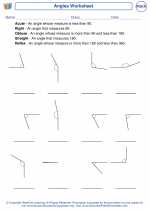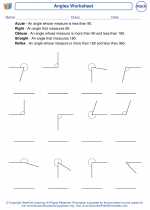Parallelogram
A parallelogram is a quadrilateral with opposite sides that are both parallel and equal in length. In addition, opposite angles are also equal. This means that the opposite sides of a parallelogram are equal in length and the opposite angles are also equal.
Properties of a Parallelogram:
- Opposite sides are parallel.
- Opposite sides are equal in length.
- Opposite angles are equal.
- Consecutive angles are supplementary (add up to 180 degrees).
- Diagonals bisect each other (they intersect at their midpoints).
Formulas for Parallelogram:
Area of a parallelogram = base * height
Perimeter of a parallelogram = 2*(length + width)
Types of Parallelogram:
There are different types of parallelograms based on their properties:
- Rectangle: A parallelogram with all angles as right angles.
- Rhombus: A parallelogram with all sides of equal length.
- Square: A parallelogram with all sides of equal length and all angles as right angles.
Study Guide:
When studying parallelograms, make sure to understand the properties, formulas, and types of parallelograms. Practice solving problems related to finding the area, perimeter, and properties of parallelograms. Also, understand the relationship between parallelograms and other quadrilaterals, such as rectangles, rhombuses, and squares.
Additionally, practice drawing and identifying parallelograms based on their given properties. This will help you recognize different types of parallelograms and apply the appropriate formulas to solve for their properties.
Understanding the concepts and properties of parallelograms will also help in solving geometry problems and real-life applications involving shapes and measurements.
.◂Math Worksheets and Study Guides Fifth Grade. Angles

 Worksheet/Answer key
Worksheet/Answer key
 Worksheet/Answer key
Worksheet/Answer key
 Worksheet/Answer key
Worksheet/Answer key
 Worksheet/Answer key
Worksheet/Answer key
 Worksheet/Answer key
Worksheet/Answer key
 Worksheet/Answer key
Worksheet/Answer key
 Worksheet/Answer key
Worksheet/Answer key
 Worksheet/Answer key
Worksheet/Answer key
 Worksheet/Answer key
Worksheet/Answer key
 Worksheet/Answer key
Worksheet/Answer key
